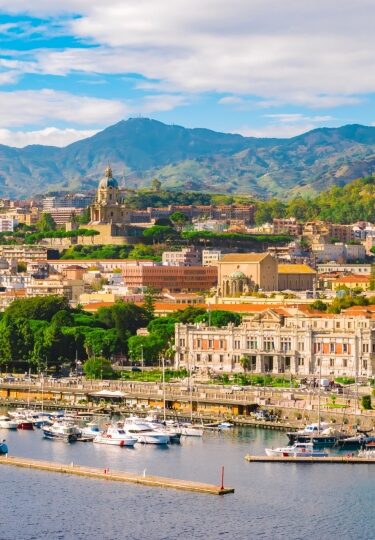Speaking practically, the historic port city of Messina, Italy, is the gateway to Sicily from the mainland. Situated on sunny Capo Peloro, on Sicily’s northeastern point, it looks across the strait that bears its name towards the rugged brown mountains and long seafront promenades of Calabria, the “toe” of Italy’s boot shape.
But Messina, home to the Mediterranean’s largest natural harbor, is more than just a gateway. It’s also a crossroads of seas and stories, where the Ionian and Tyrrhenian meet and where Odysseus narrowly survived Scylla and Charybdis. This is the location where St. Paul the Apostle arrived to convert Sicily to Christianity.
Given its location near the volcanic Aeolian Islands, it’s little surprise to discover that Messina’s history—like Sicily as a whole—has been shaped by seismic events. Despite ravages of war and earthquakes, pockets of antique splendor, thanks to much painstaking restoration work, persist in Sicily’s third-largest city. Visitors even arrive on some of the continent’s last remaining train-ferries that cross the strait, giving Messina an old-fashioned feel.
Those who take time to discover this corner of Sicily will find a welcoming city with a festival schedule as colorful as its history is eventful.
Why Visit Messina
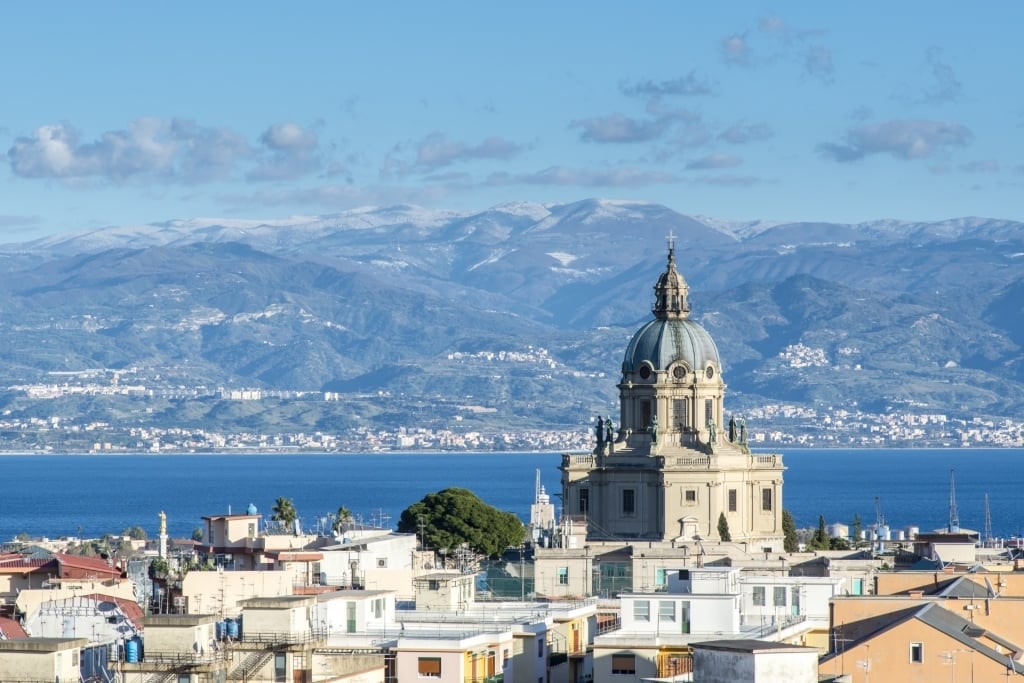
Messina
Messina might look grand when arriving across the water, but it’s really a laid-back place to visit. Remaining as it does in the shadow of other Sicilian tourism magnets like nearby Taormina and the atmospheric Palermo, Messina’s sights, panoramic viewpoints, and seafront bars are relatively uncrowded, making it a pleasant place to spend a day.
It’s also not too large a city, so it’s possible to get around the historic highlights in a half day’s stroll, leaving time to explore further afield.
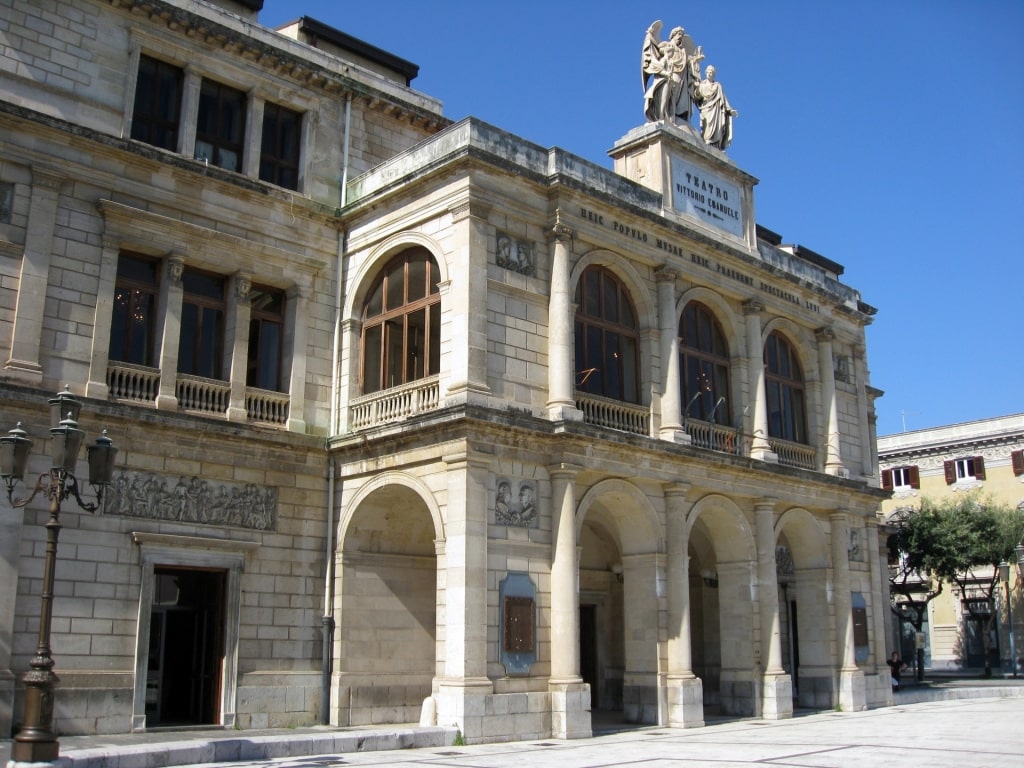
Theater Vittorio Emanuele II
A cluster of superlatives awaits you in the streets and squares clustered around Piazza Duomo. Theater Vittorio Emanuele II is Sicily’s largest theater, while the cathedral has Italy’s second-largest pipe organ.
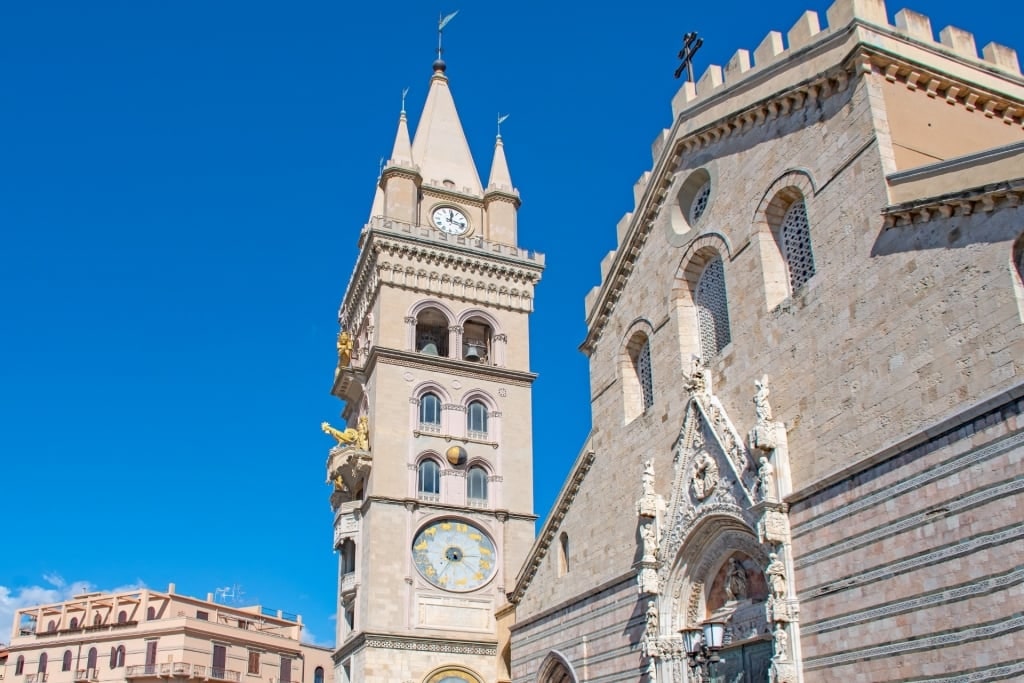
Bell tower in Piazza Duomo
Perhaps the most unusual is the bell tower in Piazza Duomo, which contains the world’s most complex mechanical and astronomical clock.
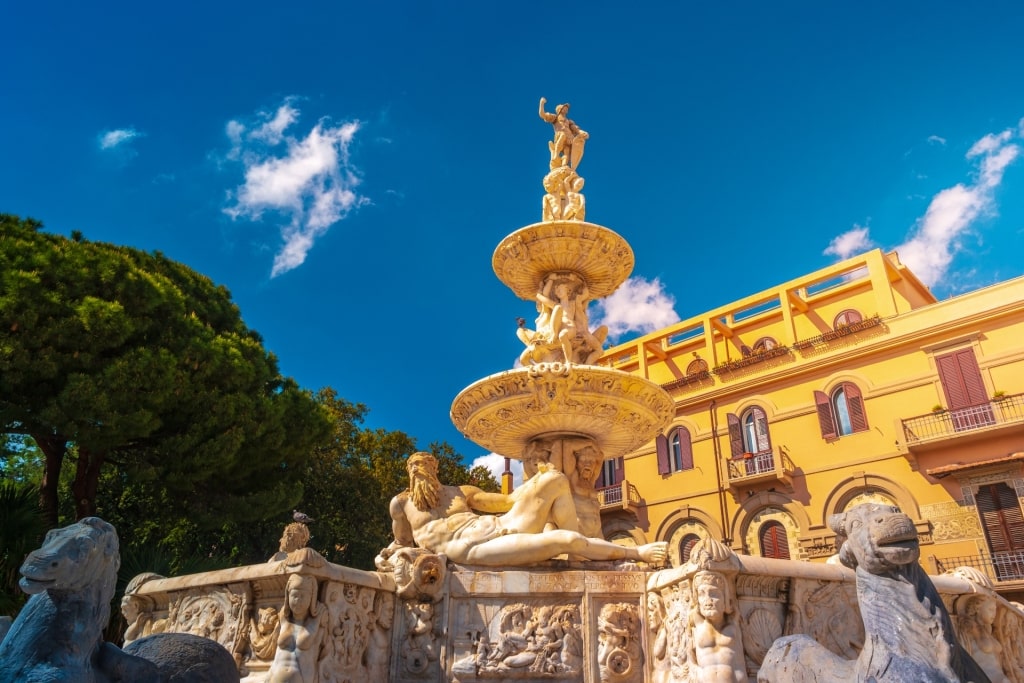
Fontana di Orione
Arrive at noon to watch the statues on its facade complete a 12-minute dance. While you’re waiting, admire the Fontana di Orione made from Carrara marble. Its statues represent rivers like the Tiber and the Nile, as well as a plucky nearby brook.
In fact, you’ll begin to see statues everywhere as you explore Messina, triumphant on plinths, tucked into street corners, or peering out from unexpected hollows in the baroque architecture. When they’re not figures from history, they’ll usually be the likeness of a former upstanding citizen or a monied member of the elite.
This very personal touch of the artists and architects who have created this elegant city, and the astonishing story of Messina’s tragic history and ability to regenerate itself are just two compelling reasons to spend time here.
History & Culture
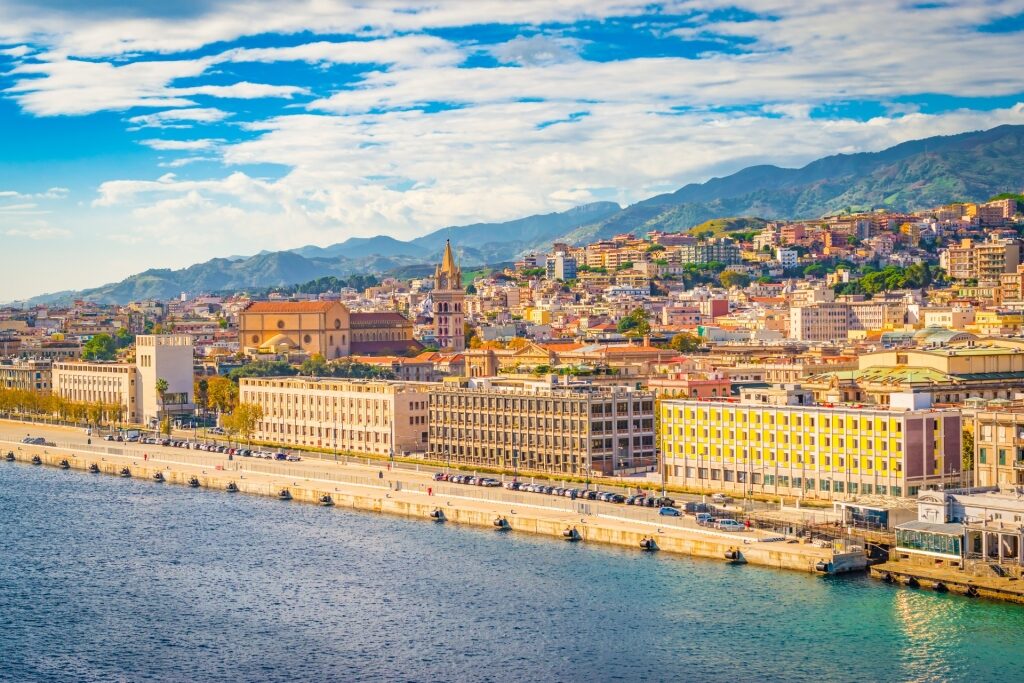
Messina
When Messina was founded in the 8th century BC by Greek colonists, it was originally named “Zancle” due to the natural harbor’s scythe-like shape.
For the most part, Messina’s history is in keeping with Sicily’s remarkable story as an island of strategic importance in the heart of the Mediterranean, balanced between Africa and Europe.
After bouncing between every ambitious regional power for the better part of a millennium, Sicily (and Messina with it) became part of a unified Italy in the 19th century.
Alongside this, Messina’s story is shaped by two other forces: a desire for independence and, more significantly, natural disasters, from the Black Death in 1347 and again 400 years later, to a devastating earthquake.
After decades of rebuilding—and a period of internal strife during the Risorgimento (the 19th-century reunification of Italy), a second huge earthquake caused extensive destruction in 1894.
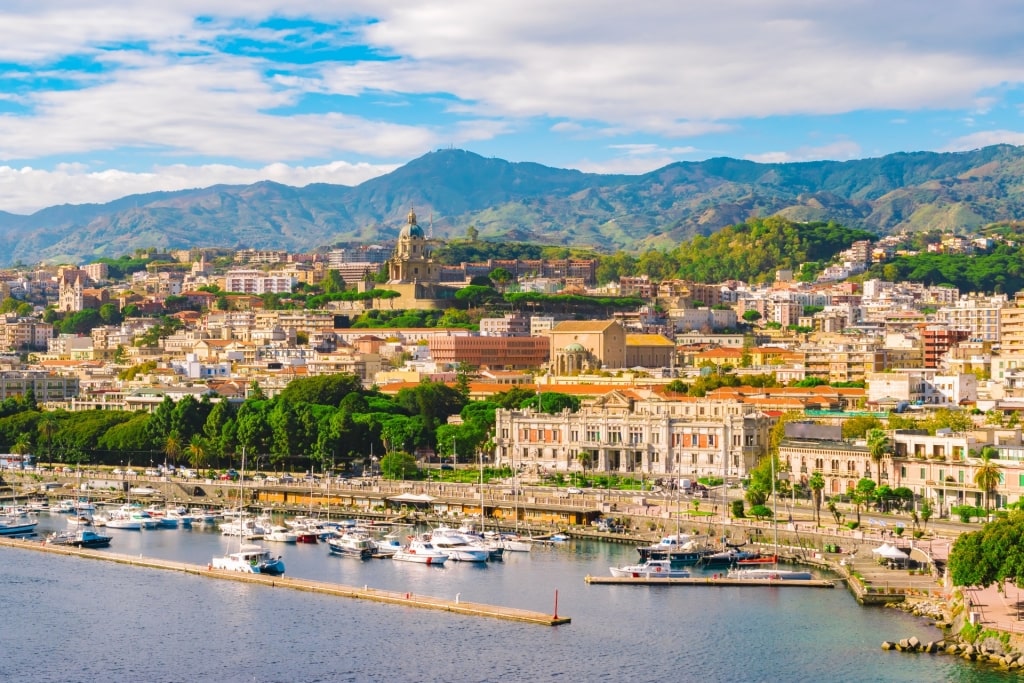
Messina
And it didn’t end there. In 1908, a few days after Christmas, a third earthquake with an accompanying tsunami wiped out 100,000 people and much of the remaining Greek and Roman architecture. However, by the following year, the resilient city had been mostly repaired and rebuilt.
With the advent of World War II, the destruction this time was mostly man-made. As a crucial supply chain link for Axis forces in Sicily, Messina was heavily targeted by the allies. Their bombing raids leveled a third of the city.
To this day, a Greek-speaking minority exists in the city. Although it would be romantic if they could trace their lineage back to the original settlers, these Greek Messinese were actually refugees welcomed into the city in the 16th century.
Tips for Visiting Messina
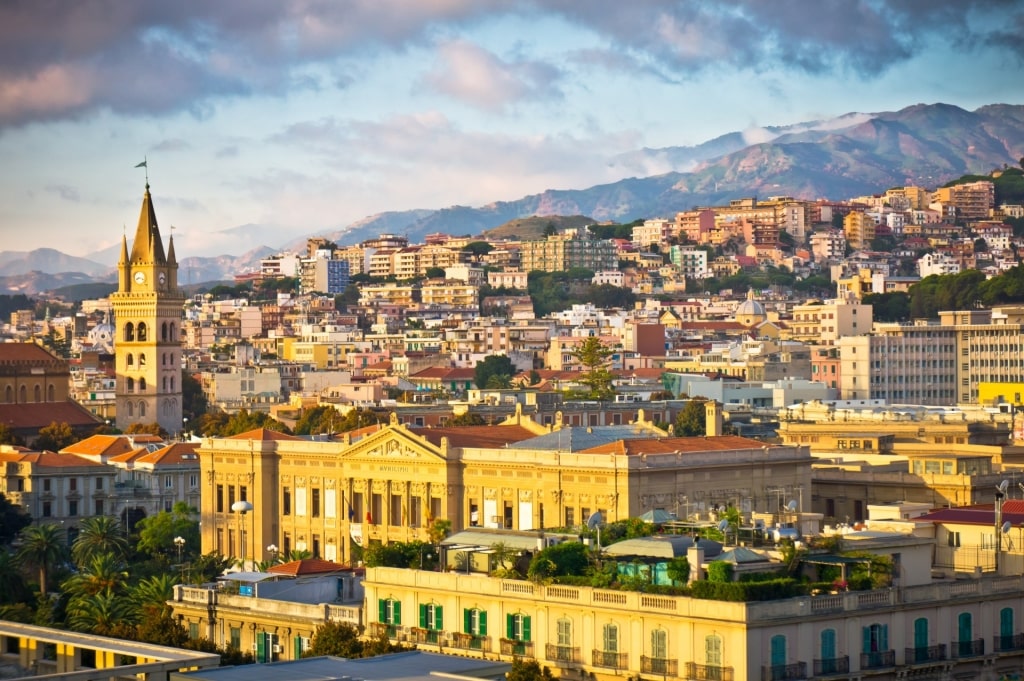
Messina
Messina is a city that invites exploration on foot. If you’re visiting in the heat of summer, slow down to the pace of the locals, taking time for coffee stops, snacks, people watching, and, of course, gelato.
While wandering the streets breathing in the delicious aroma of arancini (fried rice balls) from street stalls, there are a couple of helpful stops that can give you an intriguing perspective on the city’s history. Taking time to visit these is all part of piecing together the puzzle of this fascinating place.
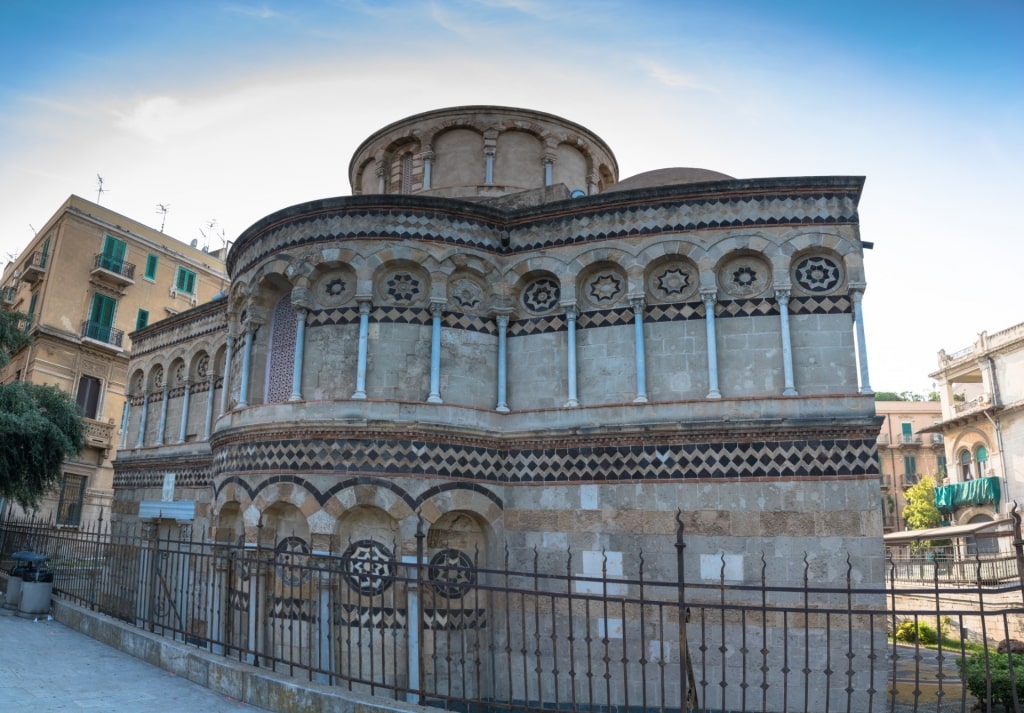
Church of the Santissima Annunziata dei Catalani
One is the Church of the Santissima Annunziata dei Catalani. This striking architectural patchwork is a survivor of the 1908 earthquake. Its sunken state acts as a dramatic marker for the original street level prior to the quake.
Messina is also home to one of the continent’s oldest and largest monumental cemeteries—the Gran Camposanto. It’s a highly atmospheric place to visit and reflect on the city’s travails.
The sculptural tombs are also extremely striking, as are the views of the coast over the aromatic Mediterranean scrub springing up around the monuments.
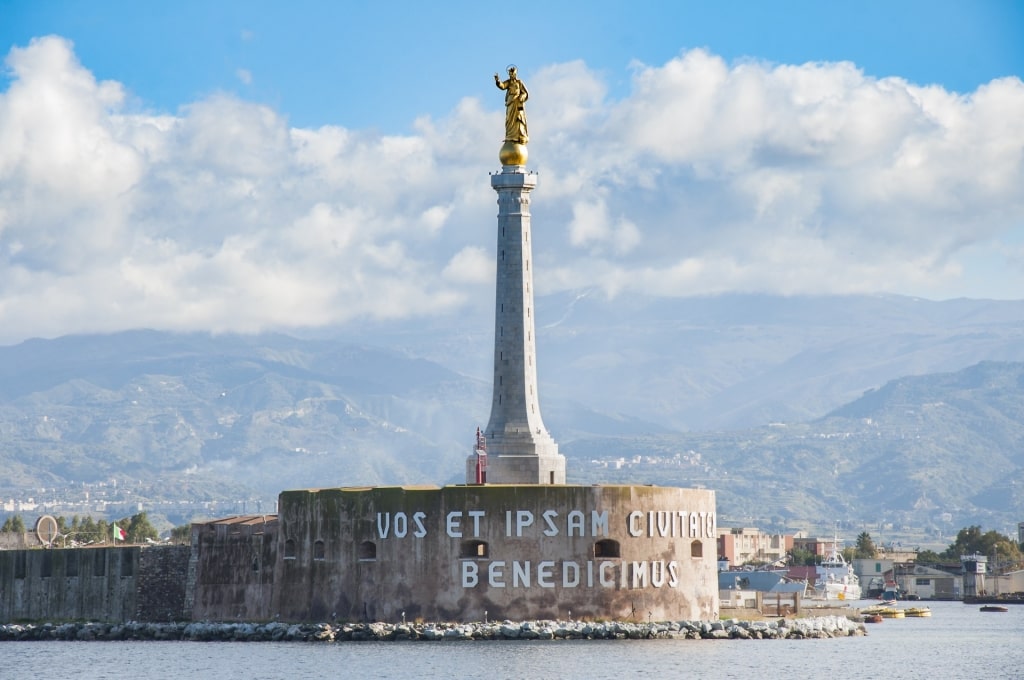
Madonnina del Porto
From the Gran Camposanto, head back to Messina’s sea-salt-swept center of life—the port. On the end of the Raineri peninsula, set on the San Salvatore Fort, you’ll see the Madonnina del Porto, a column over 100 ft tall, the bronze statue at the top just over 20 ft tall.
The icon is meant to bestow a blessing on all who enter the Italian port. Feel doubly blessed, though, when you stop in for a chocolate hazelnut gelato at Pasticceria Gelateria Ragusa Eventi on via Garibaldi.
Things to Do & Attractions in Messina
See the Museum of the Treasure of the Cathedral of Messina
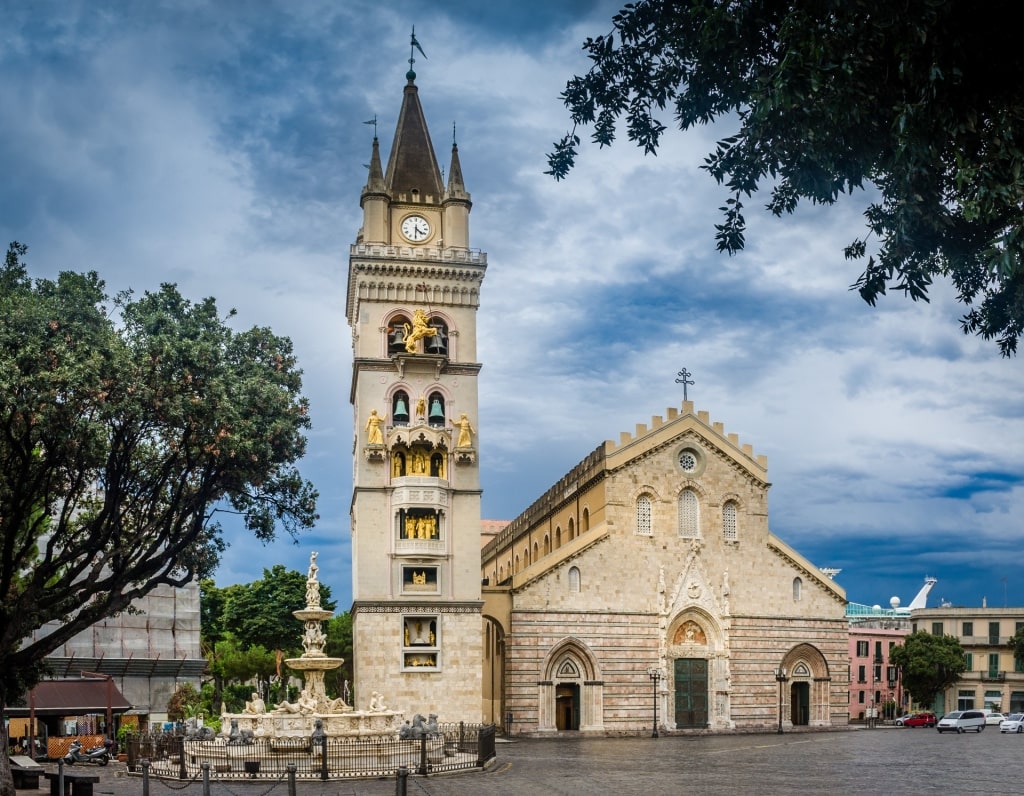
Cathedral of Messina
This bijou museum, found within the Duomo’s south hall, is a 400-strong trove of glinting artifacts created by the city’s goldsmiths and silversmiths across the centuries. As the name of the museum suggests, the “treasure” amounts to what was the sacred ornamentation of the Duomo.
It’s a fantastic collection to gaze upon, and of course, there’s the Duomo inside which you’re standing to explore as well.
Despite much reconstruction through the years, this remains one of Sicily’s finest cathedrals—a columned basilica with intricate mosaics in the apse and a beautifully decorated ceiling, as well as plenty of shade on a scorching Sicilian summer’s day.
Read: Discover Italy in the Summer
Explore Gorgeous Savoca
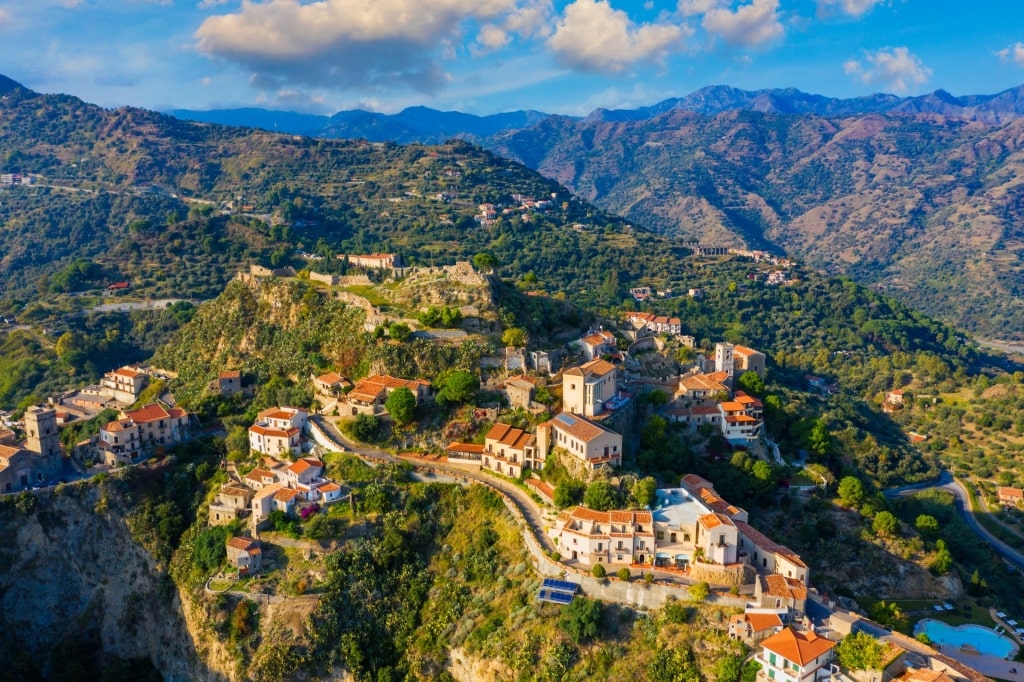
Savoca
Close to Messina, you’ll find a variety of gorgeous destinations good for a half-day excursion or more. Savoca is one of these, nearly halfway to glamorous Taormina.
Named for the savoca (“elder”) plant, the white flowers of which you’ll see popping up between the town’s fragrant rosemary and lavender shrubs, this beautifully aged hilltop hamlet straddles two peaks on the country’s eastern coast.
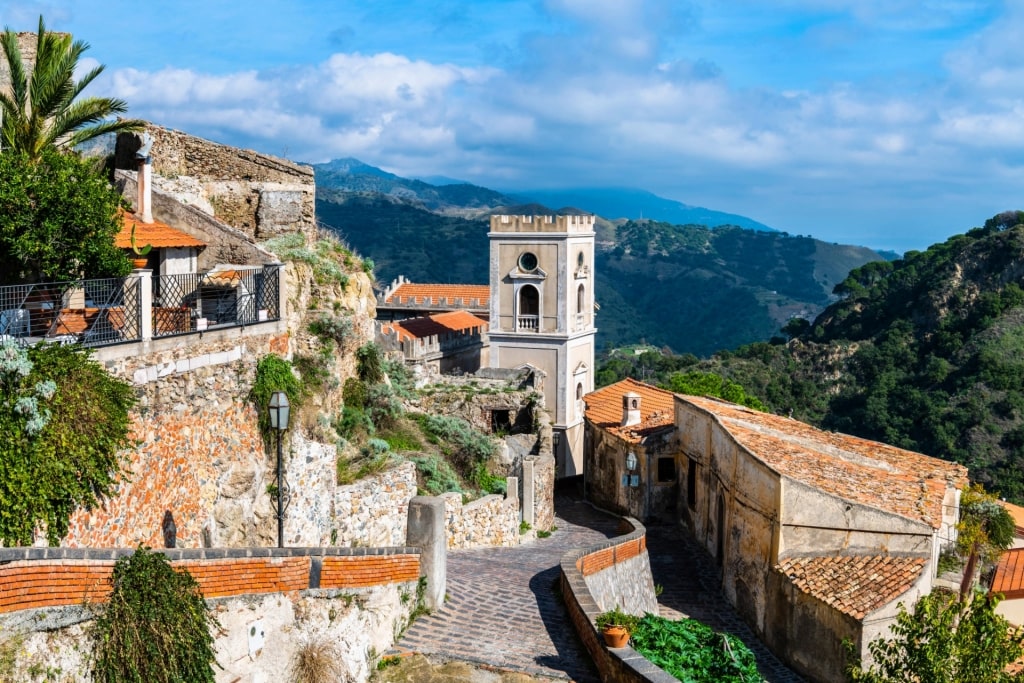
Savoca
A visit here is to take in the atmosphere of a quintessential Sicilian town: the elegant decay, the slow pace of life, the stunning views. Pick up a cup of searingly cool granita from Bar Vitelli and look out across the Strait of Messina, over the fishing boats, and towards the faint chocolate haze of Calabria.
See Glamorous Taormina
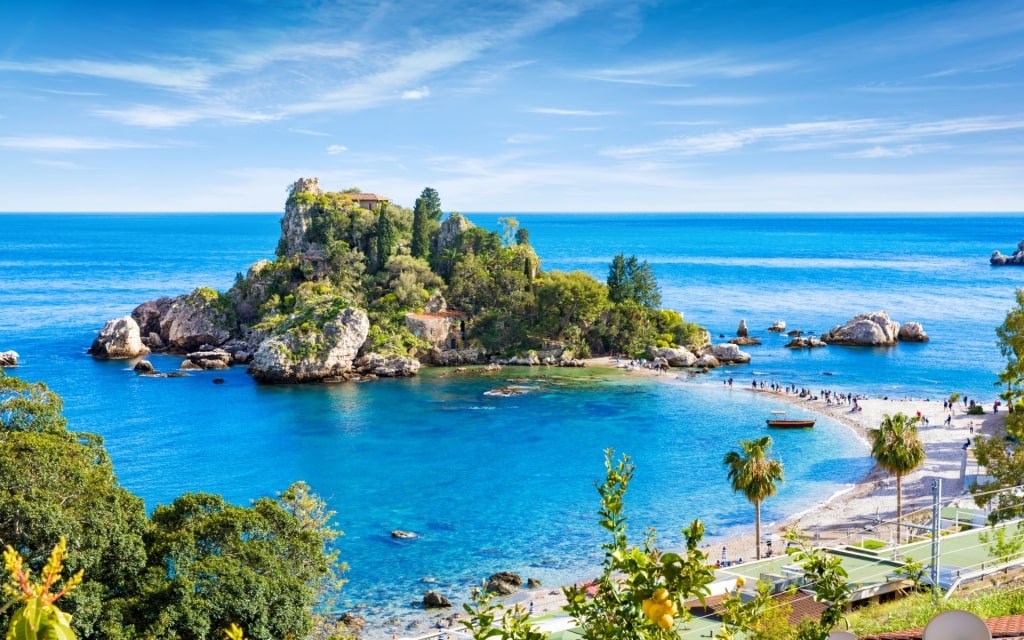
Isola Bella, Taormina
Taormina is Sicily at its most fabulous, an idyllic town built into the side of a seaside cliff. Umbrella pines float up around it while beneath sits the picturesque Isola Bella—one of the best beaches in Italy—connected by a funicular to the town’s historic center.
Under an hour’s drive from Messina, it was an essential stop in the 19th-century Grand Tour and, in fact, Taormina has long had artistic associations. It was here that D. H. Lawrence wrote his scandal-inducing Lady Chatterley’s Lover while enjoying a two-year sojourn in this lovely town.
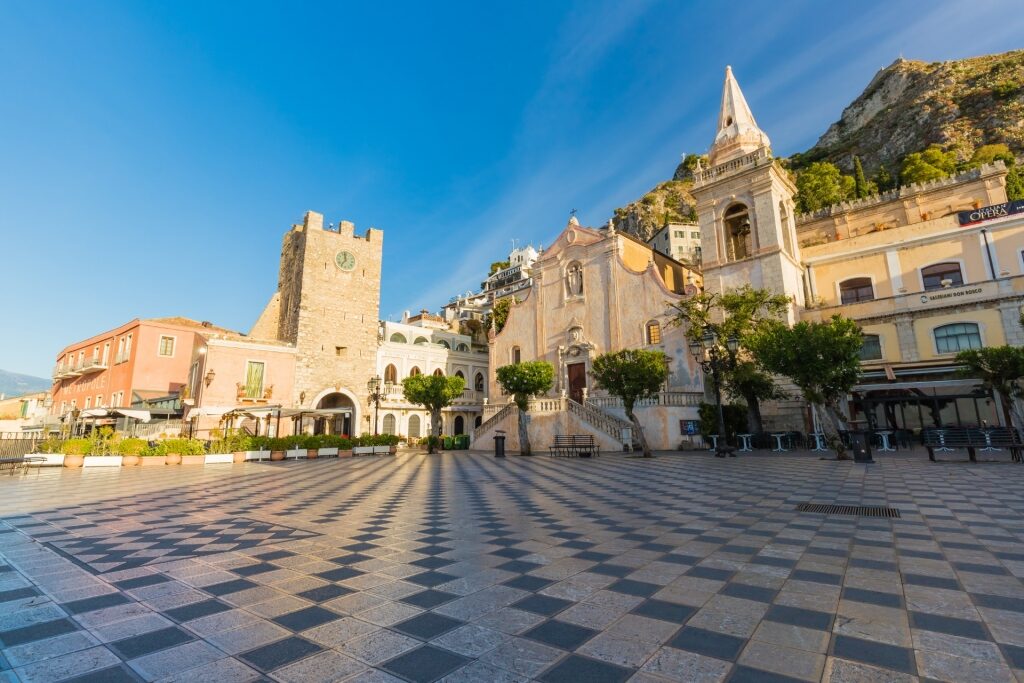
Corso Umberto, Taormina
Taormina’s winding streets are lined with orange trees whose fragrance haunts its shady parkland. It’s there too, carried on the breeze, to the boutique and cannoli-lined high street of Corso Umberto and tossed in the salty updrafts of sea air at cliffside Piazza IX Aprile.
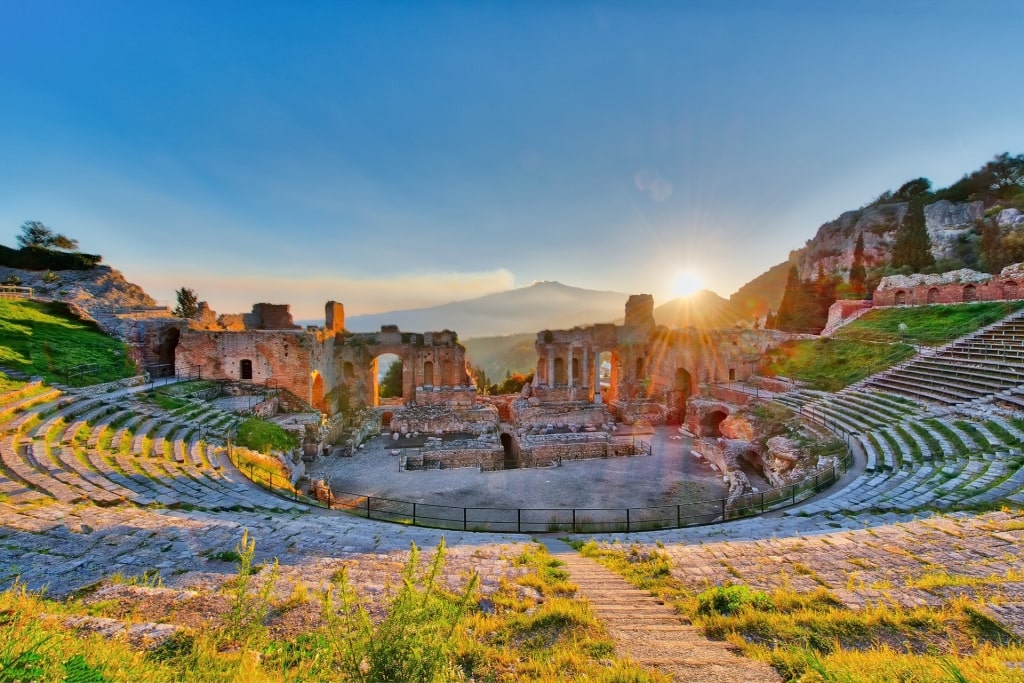
Greek Theater of Taormina
Perhaps the best viewpoint of all is from the Greek Theater—a half-ruined edifice built into the mountain above the town. One of the best theaters in the world, and Sicily’s second-largest, it’s an incredibly atmospheric venue for al fresco theatrics with Mount Etna simmering in the background.
Enjoy Volcanic Vistas From Castelmola
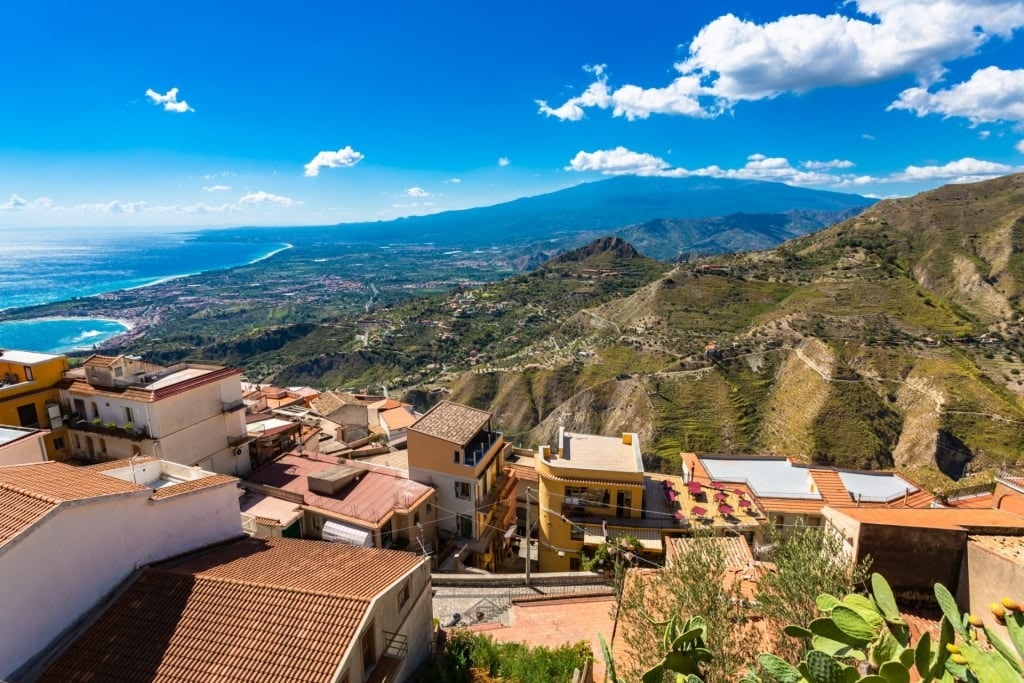
Castelmola
If it’s views of Mount Etna you want, you can do worse than making your way to Castelmola, one of the best places to visit in Sicily. A little inland from Taormina, and about 10 minutes further by car from Messina, this stunning Norman fortress-turned-atmospheric hill town offers some of the island’s best views over Etna’s charismatic cone.
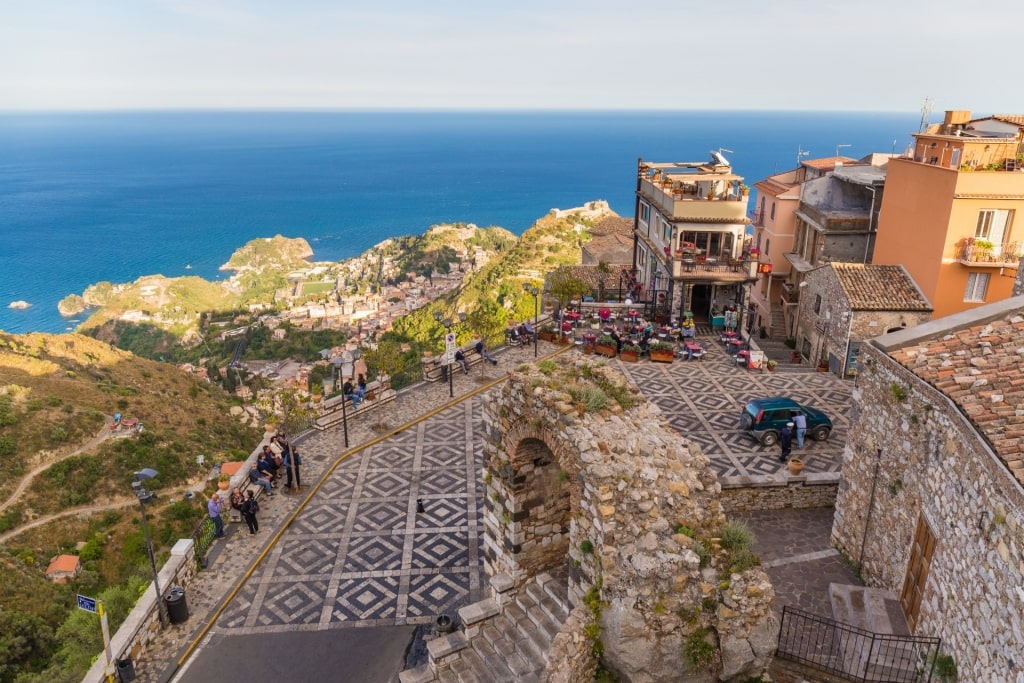
Castelmola
Once you’ve drunk in the views and the baroque architecture that Italy is known for, it’s time to find a seat on the diamond-patterned piazza outside Caffe San Giorgio and taste the village specialty, vino alla mandorla. It’s a syrupy glass of almond wine infused with citrus essence which, according to its creator Signore Blandano, is Sicily in a glass.
Take the Godfather Tour
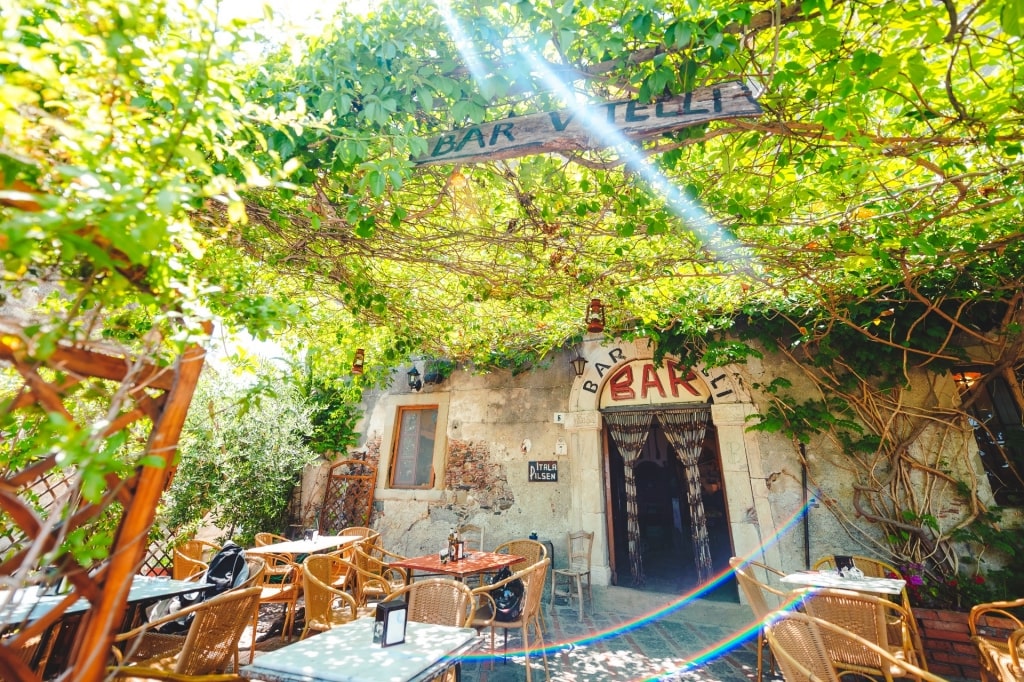
Bar Vitelli
Sicily is forever fused with Mario Puzo’s mafia novel, The Godfather. And while it’s been half a century since the story first made the transition to the silver screen, it can feel like a current release, such is the persistent passion its fans hold for the trilogy.
Whatever your level of interest in tales of the mafia, the Godfather Tour offers both succor to film and literature enthusiasts and a rather excellent expedition through some of the island’s small towns and villages, some changed so little by time that they could still pass for 1940s Sicily, when the first novel is set.
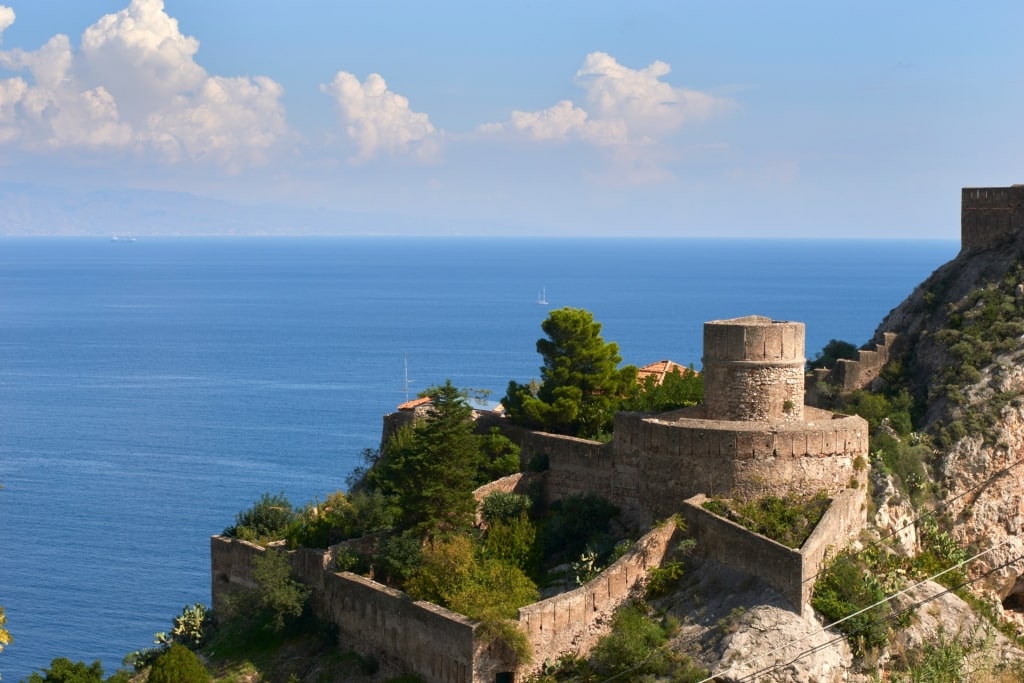
Capo Sant’Alessio
Stop at hilltop Savoca and discover the cobblestoned lanes of medieval Forza D’Agro (and, if there’s time, stop into its museum of landmarks molded out of chocolate).
Godfather tours also visit Capo Sant’Alessio’s stunning Italian castle, a dramatic setting for a story of crime, love, and intrigue if ever there was one.
Food & Drink
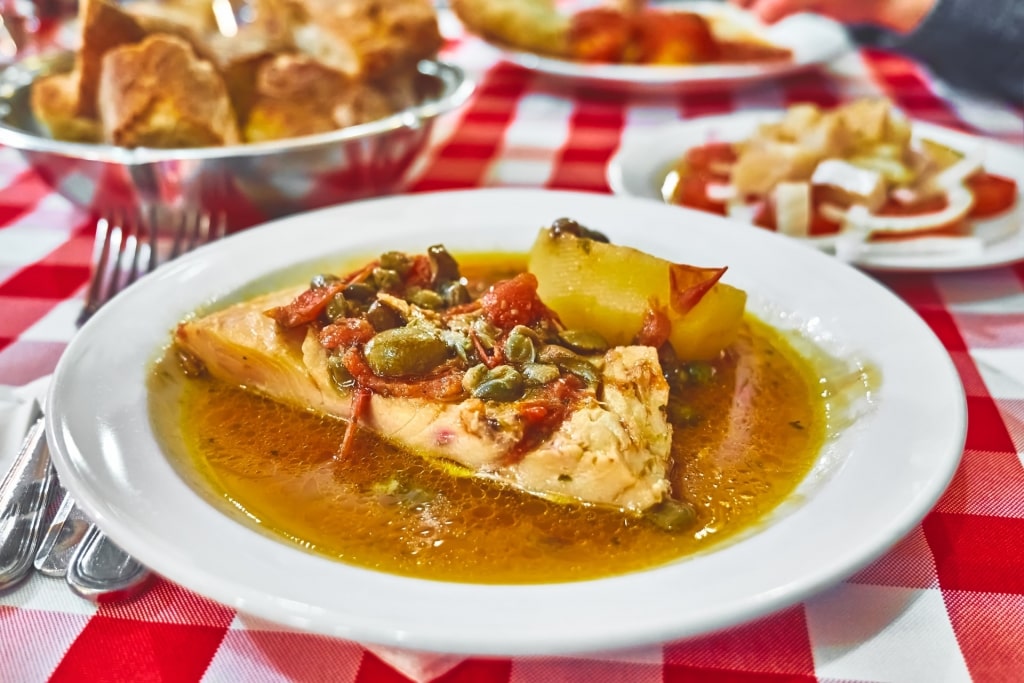
Fish
While mainland Italians will find much that’s familiar on Sicilian menus when they descend for their summer vacations, the island does very much have its own distinctive culinary traditions.
You’ll encounter flavors and spices that recall Arab, Spanish, and Greek cuisine, as well as an emphasis on seafood such as sardines, lobster, and swordfish (typically hunted in a traditional felucca boat) and frequently served with Arab couscous. For a taste of this unique blend done very well, head to stalwart Taverna San Paolo near Messina’s waterfront.
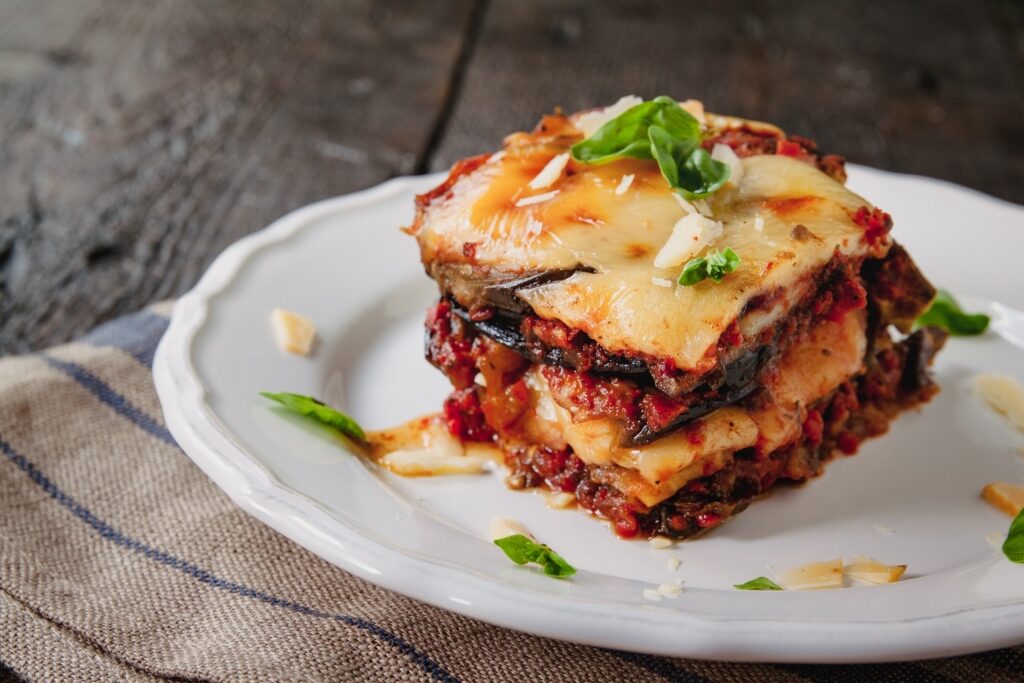
Parmigiana di Melanzane
It’s also a land where the vegetable is king, and king of kings is the eggplant (with artichoke its chief rival). Try it in Vermicelli alla Siciliana, a pasta dish with a rich, primarily tomato and eggplant sauce.
Eggplant-based side dishes include caponata with fried eggplant and toasted bread, as well as the lasagna-like Parmigiana di Melanzane.
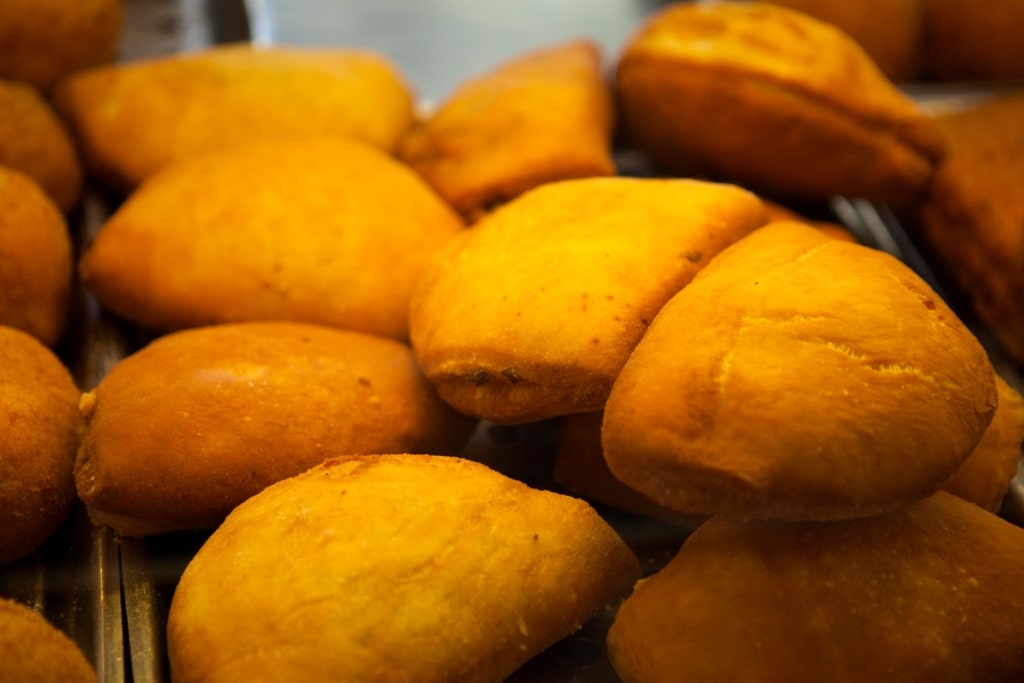
Pitoni meddinesi
Sicilian pizza (sfincione) is typically a relatively deep-dish pie, although the Messinese version, pitoni meddinesi, is more of a cheesy empanada or deep-fried calzone stuffed with toma cheese, tomato, anchovies, and endive. Try it at the one and only La Pitoneria on via Palermo.
There’s also a Messinese focaccia that you’ll be able to pick up at street food vendors that’s topped with a similarly signature umami mix.
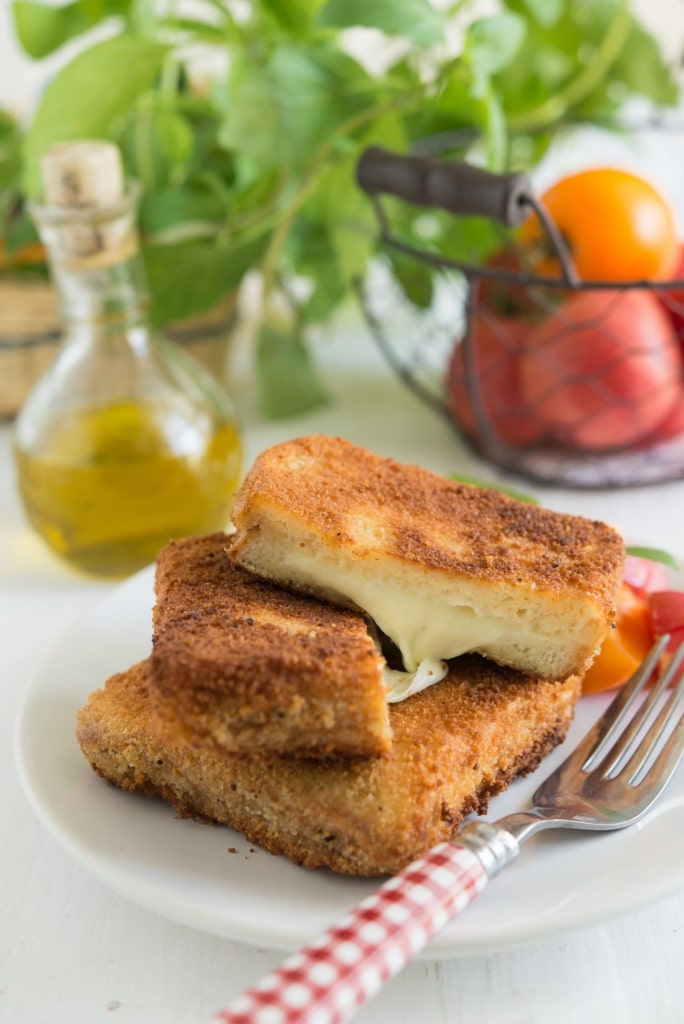
Mozzarella in carozza
Other street food classics you’ll find here include the widespread breaded rice balls arancini and mozzarella in carozza—essentially a toasted mozzarella sandwich that’s been deep-fried.
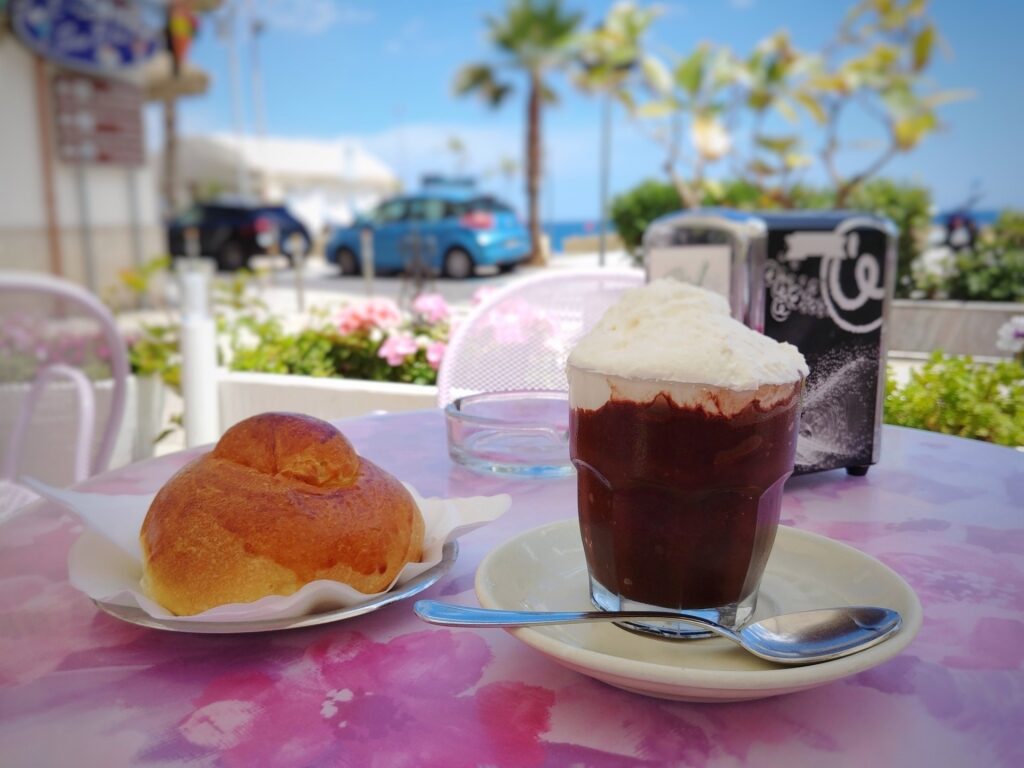
Granita
When it’s time to satisfy your sweet tooth, make your way to a granita parlor. This shaved ice treat, often served with a brioche, is actually a popular breakfast option throughout Sicily as well as a flavorsome way to beat the heat.
The stainless steel granita bucket for mezza con panna al caffe (coffee and cream) is the one that empties quickest in Messina.
Read: Best Pizza in the World
Best Time to Visit Messina
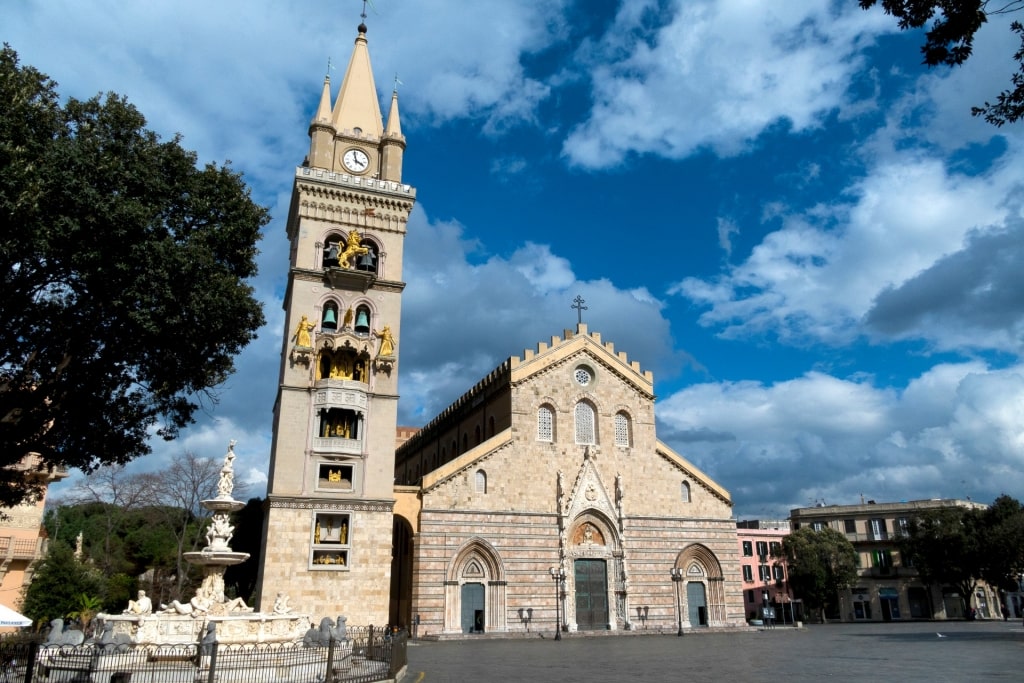
Cathedral of Messina
Sicily’s central position in the Mediterranean may have made it strategically important to medieval kings, but it also ensures plenty of sunshine during summer in Italy. And in fact, such are its mild winters and moderate rainfall that the island is something of a year-round destination.
With daytime temperatures in the shoulder months of June, September, and October running the gamut from 68°F to 77°F, these can be fabulous times to explore the island’s hinterland and its archaeological treasures within.
August sees temperatures of between 75°F and 87°F, twisting your arm to book yet another beach day wading through the coast’s opal blue shallows.
The sea is a wonderful swimming temperature until about mid-September, although outside of the May to August seasonal sweet spot, there can be a slightly higher chance of rain. But a brief shower is hardly what the Messinese would call a disaster.
Read: Best Beaches in September to Visit
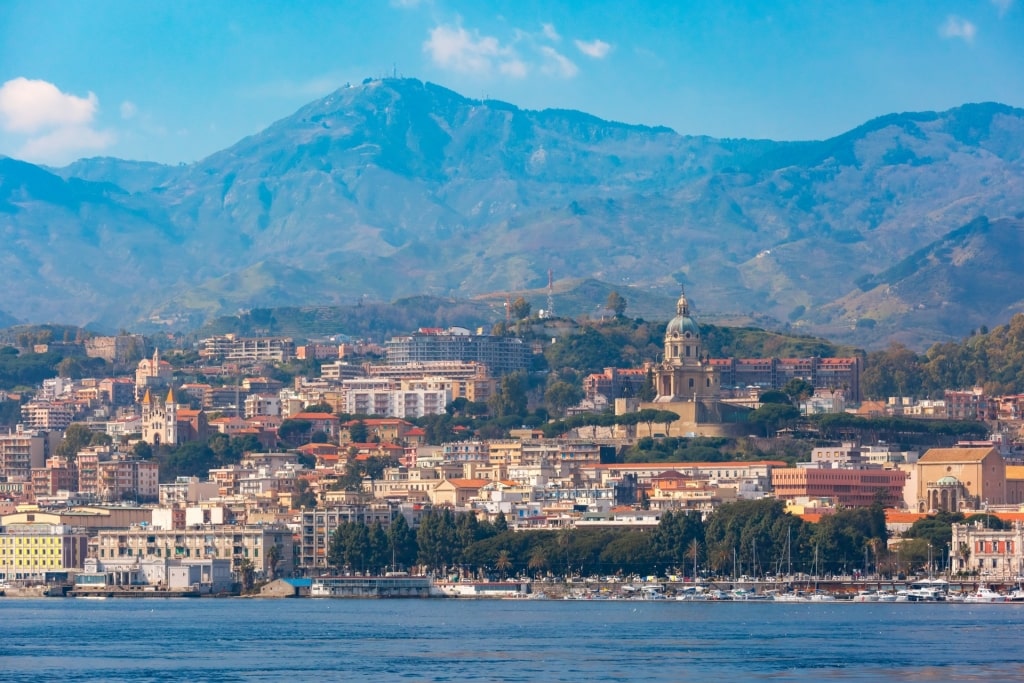
Messina
Discover the fascinating history, local color, and eggplant fetish of Messina, Italy on a cruise to the bel paese. Browse cruises to Messina and book your next unforgettable vacation.
